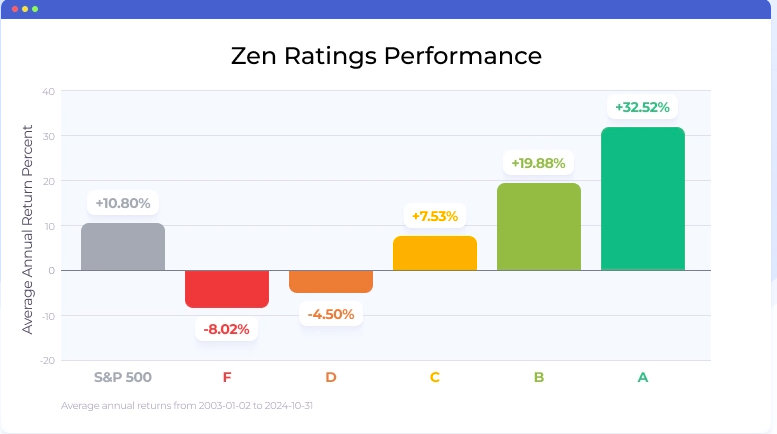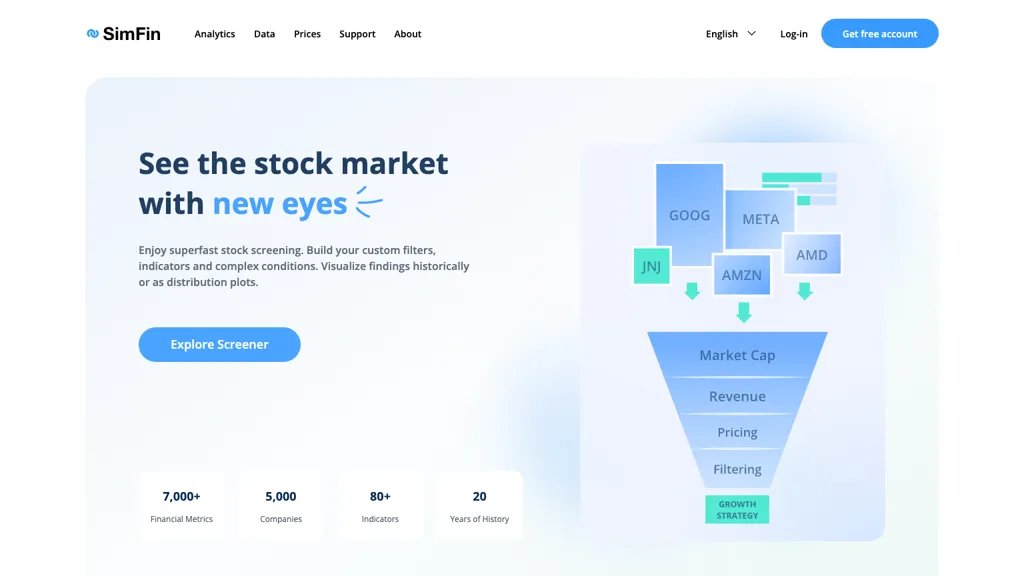20 Recommended Reasons For Selecting AI Stock Investing Platform Websites
20 Recommended Reasons For Selecting AI Stock Investing Platform Websites
Blog Article
Top 10 Things To Consider When Looking At Ai Trading Platforms For The User Interfaces They Provide And Experiences
The User Interfaces and user experiences are crucial for the user-friendliness of an AI stock-predicting/analyzing trading platform. An undesigned user interface can hinder decisions even when the AI models that underlie the interface are robust. Here are the 10 best ways to evaluate the UX/UI.
1. Assess the sensitivity of your intuition and ease of Use
Navigation: Ensure the platform is easy to navigate, with clear menus, buttons, and workflows.
Learning curve: Find out the speed at which new users be able to use and comprehend an application without requiring lengthy training.
Consistency: Check for consistent design patterns (e.g. buttons designs or color schemes) across the platform.
2. Make sure you check for customizability.
Dashboard customization: Check for the possibility of being able to customize dashboards so that they show relevant data including graphs, metrics, and graphs.
Flexibility in layout is essential: Make sure you can alter the arrangement and size of charts as well as widgets and tables.
Themes and Preferences: Verify that the application supports dark or light modes, or other preferences.
3. Examine the data Visualization
Chart quality: Make sure the platform offers high-quality, interactive charts (e.g. candlestick charts, line charts) with zoom and pan functions.
Visual clarity: Check if the data is presented clearly, with appropriate labels as well as legends and tooltips.
Real-time updates: Verify that the visualizations are updated in real time to reflect any changes in the market.
4. Test Speed and Responsiveness
Time to load: Make sure your platform loads fast, even when handling large datasets or complicated calculations.
Real-time performance: Check whether the platform is able to handle real-time data feeds, without delays or lags.
Cross-device compatibility: Make sure to see if your platform works across all devices (desktops and mobiles, as well as tablets).
5. Evaluate Accessibility
Mobile App: Ensure the platform provides a mobile trading app with full functionality.
Keyboard shortcuts - Ensure that the platform is equipped with keyboard shortcuts that are available to power users.
Accessibility features: Check if the platform complies with the accessibility requirements (e.g. screen reader support, high contrast modes).
6. Assess Search and Filter Functionality
Search efficiency: Ensure the platform allows users to quickly search for indexes, stocks or any other asset.
Advanced filters: Determine whether the user is able to apply filters to produce results that are more specific (e.g. by capitalization, sector, or performance metrics).
Saved searches. Verify the platform's ability to allow users to store frequently used search terms, or filters.
7. Check for Alerts & Notifications
Customizable alerts: Users are able to create notifications that are specifically tailored to the conditions of their needs.
Notification delivery: Ensure that alerts are sent via multiple channels, e.g. SMS, email or in-app notifications.
Make sure to check the alerts' timing and accuracy.
8. Integrating Other Software
Integration with brokers: The platform must be connected to your brokerage account so that trades can be executed quickly.
API access Make sure to check whether APIs are accessible to advanced users looking to create customized workflows or tools.
Third-party Integrations: Verify that the platform is compatible with the other programs (e.g. Excel, Google Sheets and trading bots).
9. Look over the Support and Help Features
Check the onboarding tutorials.
Help center: Ensure that the platform offers a comprehensive knowledge base or help center.
Customer support: Determine whether you will receive a quick response via the website (e.g. via live chat, via email, or on the phone).
10. Test Overall Customer Satisfaction
User feedback: Utilize reviews and testimonials of users to determine their overall satisfaction with the platform's UI/UX.
Free trial period: Test the platform at no cost and assess its effectiveness.
Error handling: Examine how the platform handles errors and edge situations (e.g., invalid inputs or downtime of servers).
Bonus Tips
Aesthetics Functionality is important, but, a visually appealing design can enhance the overall user experience.
Performance under stress Test the platform to make sure that it remains responsive and stable during periods of high volatility.
Find out if the platform offers a user community where users can exchange feedback and share tips.
These guidelines will allow you to evaluate the interface for users and user experience AI trading platforms which predict/analyze the prices of stocks. You can be sure that they're effective, aligned to your specific trading needs and are user-friendly. The user interface and experience of a trading platform could significantly impact your ability to make informed trades and make the right decisions. Follow the top rated a fantastic read for best ai stock trading bot free for more tips including ai for trading, ai stock, best ai stock trading bot free, ai investing app, ai for stock trading, ai stock market, ai trade, ai for investment, ai stock market, ai stock trading app and more.
Top 10 Tips On Assessing The Regulatory Compliance Of Ai-Powered Stock Predicting/Analyzing Trading Platforms
When it comes to evaluating AI trading platforms, compliance with regulatory requirements is critical. Compliance is essential because it ensures the platform complies with regulations and legal frameworks. It also safeguards users' personal information. Here are the top 10 suggestions on how to assess the conformity of these platforms.
1. Verify the Licensing & Registration
Regulators: Make sure the platform's registration and license is with the appropriate financial regulators (e.g. SEC or FCA in USA, ASIC or ASIC in Australia).
Broker partnership: If the platform integrates with brokers, make sure that brokers are legally licensed and regulated.
Public Records: Go to the website of your regulator agency for details on the status of registration or past violations, as well as other relevant information.
2. Assessment of Data Privacy Compliance
GDPR: If you are serving or operating within the EU, make sure that your platform is in compliance to the General Data Protection Regulation.
CCPA – For Californian users, check compliance with California Consumer Privacy Act.
Data handling policies: Go through the policy on data privacy of the platform to ensure it outlines how user data is collected as well as how it is stored and shared.
3. Evaluate Anti-Money Laundering (AML) Measures
AML policies: Ensure that the platform is equipped with a robust AML policy to detect and prevent any money laundering.
KYC procedures: Determine whether the platform supports Know Your Customer (KYC), which verifies user identities.
Monitoring transactions: Find out if the platform monitors transactions for suspicious activities and reports it to authorities in charge.
4. Make sure you're in compliance with Trading Regulations
Market manipulation: Ensure that the platform is equipped with strategies to stop market manipulations, like washing trading or the spoofing.
Types of orders: Make sure that the platform is in compliance with the rules governing the types of orders (e.g. no illegal stop-loss hunt).
Best execution: Ensure that the platform is following the most efficient execution procedures to ensure that trades are executed at the highest price.
5. Cybersecurity Assessment
Data encryption. Your platform should use encryption to protect user data both during transit and in the rest.
Response to incidents. Verify whether the platform has a plan of action for handling cyberattacks and data breaches.
Certifications: Make sure the platform has cybersecurity certifications (e.g., ISO 27001, SOC 2).
6. Transparency Evaluation and Transparency Evaluation and Disclosure
Fee disclosure: Make sure that the platform has clearly disclosed all fees including additional charges or hidden charges.
Risk disclosure - Verify that the platform provides clear risks and disclosures. This is particularly important for trading strategies that have high leverage or risk.
Performance reporting: Find out whether the AI model's algorithms are transparent and correctly recorded.
7. Check for the conformity to International Regulations
Cross-border trading When you conduct business internationally, ensure the platform meets laws in all jurisdictions that apply to it.
Tax reporting: Check if the platform offers tools or reports to assist users comply with tax laws.
Conformity with sanctions: Ensure that the platform adheres and is not allowing transactions or trading with countries or entities that are banned.
8. Assess record-keeping and audit trails
Transaction records: Ensure that the platform has precise records for purposes of regulatory and audit.
User activity logs (logs): Check to see if the platform tracks the activities of users, such as trading and logins. Also, make sure that account settings are changed.
Audit readiness: Find out whether your system can produce the required documentation and logs in the event of a regulatory inspection.
9. Make sure you are in compliance with AI-specific Regulations
Algorithmic rules of trading: If a platform allows algorithmic trading, it should conform to European regulations such as MiFID II and U.S. Reg SCI.
Fairness and Bias: Check for any biases that the AI platform is able to control and minimize in its AI model. This ensures fair and ethical trade.
Explainability: As required by certain regulations, the platform should provide clear explanations of AI-driven decisions and forecasts.
10. Review User Commentaries and Historical Regulatory The History
User reviews: Study user reviews to determine the reputation of the platform's regulatory compliance.
The history of regulation: Check for violations in the past of regulations, fines or penalties.
Third-party auditors: Find out if the platform is regularly audited by a third party to make sure it is adhering to rules and regulations.
Bonus Tips
Legal consultation: Consult with a legal expert about the conformity of the platform to applicable regulations.
Trial period: Make use of a no-cost demo or trial to assess compliance features on the platform.
Customer support: Make sure the platform provides support in case of questions or problems that concern compliance.
With these suggestions that you will be able to assess the regulatory compliance of AI stock predicting/analyzing trading platforms, ensuring you choose a platform that operates within legal guidelines and protects your rights. Compliance does more than minimize legal risks, it also increases trust with the platform. View the most popular this post on chart analysis ai for website tips including ai trading tool, ai options trading, how to use ai for stock trading, best ai for stock trading, free ai stock picker, free ai stock picker, ai software stocks, ai share trading, how to use ai for stock trading, free ai tool for stock market india and more.